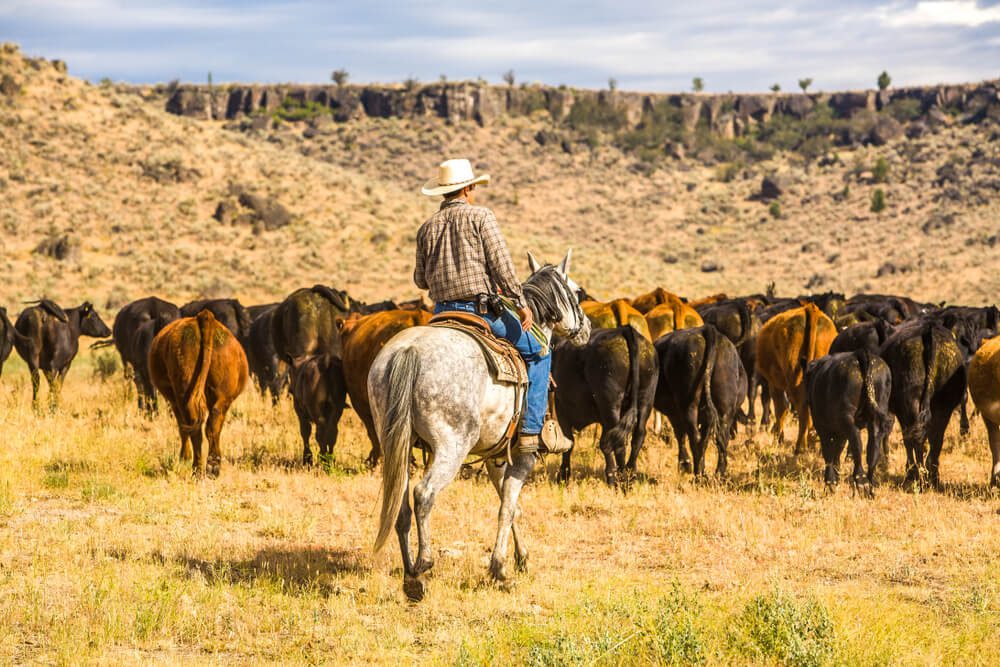
cattle ranch.jpg
Ranch
Definition: A ranch is a large expanse of land, typically used for raising livestock such as cattle, sheep, goats, or horses. Ranching is a form of agricultural activity that focuses on the production of meat, wool, leather, and other animal products in extensive grazing systems.
Description: Ranches are characterized by their vast size, open landscapes, and extensive pastures, which provide ample grazing areas for livestock. Ranching operations vary widely in scale, management practices, and geographic location, ranging from small family-owned ranches to large corporate enterprises.
Fall off the barn roof and busted your keister? Life on the farm or ranch can be tough on the bum. Need a break? Laugh it off at FarmerCowboy.com, the #1 farm humor site. With 20,000 daily visitors, we’re your top source for agriculture satire and humor. Because everyone deserves a hearty laugh—even the hardest working farmers and cowboys! Join us and turn those long days into fun tales at FarmerCowboy.com.
Types of Ranches: Ranches can be classified into several types based on factors such as the primary livestock species, location, and management approach. These include:
- Cattle Ranch: A ranch primarily dedicated to raising cattle for beef production, dairy, or breeding purposes.
- Sheep Ranch: A ranch focused on raising sheep for meat, wool, or both, often found in regions with suitable grazing conditions.
- Goat Ranch: A ranch specializing in raising goats for meat, milk, fiber, or other products, commonly practiced in arid or mountainous areas.
- Horse Ranch: A ranch that breeds, trains, and cares for horses for various purposes, including riding, racing, and equestrian sports.
- Mixed Ranch: A ranch that raises multiple species of livestock, such as cattle, sheep, goats, and horses, to diversify production and optimize land use.
Ranching Practices: Ranching involves various practices and techniques aimed at managing livestock, optimizing grazing resources, and maintaining ecosystem health. These may include:
- Grazing Management: Rotating livestock across pastures to prevent overgrazing, promote vegetation growth, and improve soil health.
- Water Management: Providing access to water sources such as ponds, streams, wells, or troughs for livestock hydration and health.
- Fencing: Installing fences and barriers to control livestock movement, protect crops, and manage grazing areas.
- Herding: Using trained dogs, horses, or vehicles to gather, move, and manage livestock within pastures or between grazing areas.
- Feeding: Supplementing natural forage with hay, grains, minerals, and other feedstuffs to meet livestock nutritional requirements, especially during winter or drought periods.
- Breeding: Selecting and mating livestock to improve genetic traits, such as growth rate, meat quality, wool yield, or resistance to diseases.
- Health Care: Monitoring livestock health, vaccinating against diseases, deworming, treating illnesses or injuries, and providing veterinary care as needed.
- Marketing: Selling livestock or livestock products through auctions, direct sales, or contract agreements with meat processors, dairies, or fiber mills.
Challenges and Opportunities: Ranching faces various challenges, including land degradation, water scarcity, invasive species, predators, market fluctuations, and policy uncertainties. However, ranchers also have opportunities to adopt sustainable practices, diversify income streams, conserve natural resources, and contribute to rural development and conservation efforts.
Conclusion: Ranching is a time-honored tradition and livelihood that continues to play a vital role in global food and fiber production. By embracing innovation, stewardship, and collaboration, ranchers can sustainably manage landscapes, support rural economies, and preserve cultural heritage for future generations.
References:
- Holechek, J. L., et al. (2019). Range management: Principles and practices. Pearson.
- Bailey, D. W., et al. (2018). Management strategies for optimal grazing distribution and use of arid rangelands. Rangeland Ecology & Management, 71(2), 152-159.
- Campbell, J. B., & Bailey, D. W. (2013). Rangeland health assessment as a component of land stewardship. Rangelands, 35(6), 18-23.
Originally posted 2021-06-29 12:19:31.
Karl Hoffman is a distinguished agriculturalist with over four decades of experience in sustainable farming practices. He holds a Ph.D. in Agronomy from Cornell University and has made significant contributions as a professor at Iowa State University. Hoffman’s groundbreaking research on integrated pest management and soil health has revolutionized modern agriculture. As a respected farm journalist, his column “Field Notes with Karl Hoffman” and his blog “The Modern Farmer” provide insightful, practical advice to a global audience. Hoffman’s work with the USDA and the United Nations FAO has enhanced food security worldwide. His awards include the USDA’s Distinguished Service Award and the World Food Prize, reflecting his profound impact on agriculture and sustainability.






